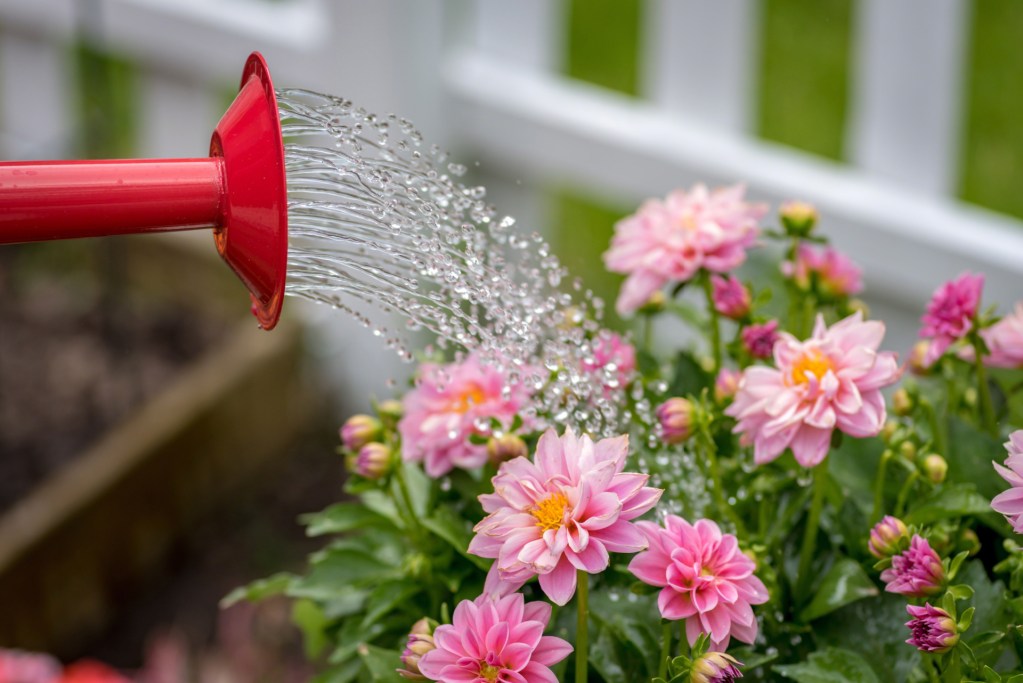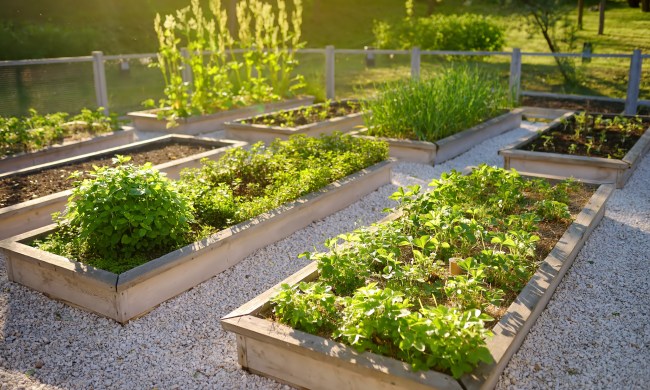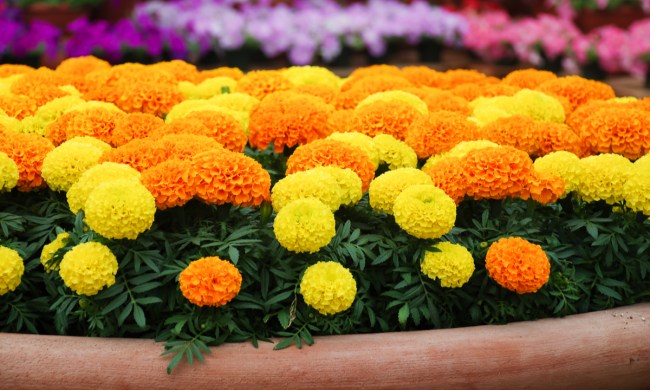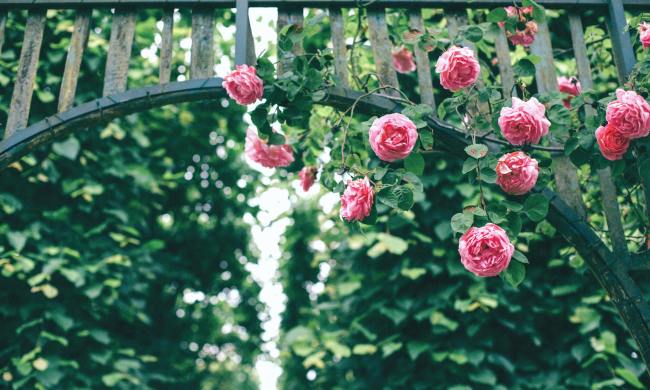Watering can be a grueling chore during the summer, and it’s no secret that your water bill can skyrocket if you have to tend to a lawn. Enter drought-tolerant gardening, also known as xeriscaping or water-smart gardening. The driving concept behind this gardening approach is simple: Create a plant space that thrives without too much water.
For such a simple idea, it can raise a lot of questions. Do you need to get rid of your existing garden? What about your lawn? What plants should you grow? Whether you want to replace your existing garden with a rock garden or simply add a smaller, more water-efficient garden to your yard, this guide to drought-tolerant gardens will help you get started.
Ditch your turf for hardscape or mulch

It’s no secret that to keep the grass greener on your side, you need to water it pretty consistently. When putting together a drought-tolerant garden design, consider downsizing your lawn space. It may be more water-efficient to ditch your turf entirely and use rocks or bark mulch. Just keep in mind that you will have to make a significant investment in time and money if you go down this route.
Look for native plants in your area

Native plants are plants that have adapted to your region’s rainfall, soil, and sunlight conditions, so there’s little that you have to do to care for them when they’re outside. While extra watering and fertilizing can be helpful, these measures aren’t usually necessary. Native plants are great because they help you cut down on your water bill while providing shelter and food for local wildlife and pollinators. More often than not, your local garden centers will have a good selection of plants that are native and perennial to your area.
Grow succulents and cacti

Succulents and cacti are notoriously hardy plants since they store water inside their fleshy stems and leaves. That means that even if you miss a watering day or two, they’ll still be able to carry on — overwatering them can lead to root rot. While many thrive in warm, arid conditions, some succulents and cacti can tolerate frost. If you live in an area prone to colder winters, it’s worth looking at hard succulents such as hens and chicks — these have thicker leaves and may be able to handle the cold better.
If you live in a warmer region, look into soft succulents such as echeverias, which will do better without frost conditions. In addition to succulents and cacti, don’t forget to consider other drought-tolerant plants and flowers.
Implement efficient watering methods

If you live somewhere that’s going through an actual drought, you might want to implement efficient watering methods throughout your yard. First things first: When you do water, water deeply so that you don’t have to whip out your hose as often — it helps if you have mulch for water retention, too. You can supplement hose watering with a drip irrigation setup that directly waters your roots and prevents waste. Plus, collect other sources for watering your plants, such as rainwater and gray water.
Properly prepare your soil

On the one hand, you don’t want to leave your plants in soil that retains too much water, as this can cause your plants to get root rot. On the other hand, soil that’s too well-draining may mean that you need to water your plants more. In a drought-tolerant garden, mix all-purpose garden soil with cactus soil so your plants get the water and nutrients they need to thrive. For extra nutrients and water retention, you could also mix in compost.
Use less fertilizer

If you’re growing native plants, you don’t have to use fertilizer as much since these plants have already adapted to your conditions without the need for enriched soil. Fertilizers, while they help your plants grow, need to be watered down, or else they may draw water from your plants and cause long-term damage. You don’t want to overfertilize when you’re not watering your plants because the salts in fertilizer can burn your plant from drought stress.
Plan a smaller garden

While large, sprawling gardens may be gorgeous, they also take more water to support. Limiting your selection to only plants you know you’ll have enough water for and planting them close together to reduce wasted water is an easy way to keep your garden green even during droughts.
While you should still be mindful of spacing your plants out to avoid crowding, keeping your garden in one section of your yard will help you water it more efficiently. The same principle applies to container gardens. Since the plants are in separate containers, they need to be watered individually. Container gardens also dry out more quickly, so stick to traditional gardening when possible.
Start small when it comes to putting together a drought-tolerant garden, whether it’s harvesting rainwater or buying a few native plants to furnish your patio. But if you want to swing big and pull up your turf to place down hardscaping, your efforts will be rewarding, too. Your initial investment of time and money will pay off as you lower your water bill, cut back on waste, and provide a lush space for local wildlife and pollinators.




